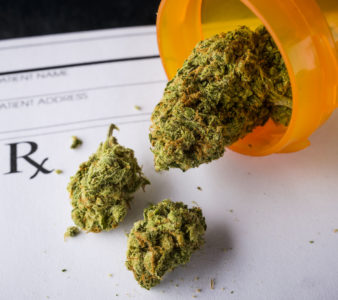 One of the approved conditions for medical marijuana in the state of Minnesota is intractable pain. Intractable pain is pain that can’t easily be tracked to a specific source and treated successfully, and many patients with chronic pain are deemed to have intractable pain. So you’d think the medical marijuana program in Minnesota would be beneficial for chronic pain sufferers? Well, according to a recent article in the Star-Tribune, it’s anything but easy.
One of the approved conditions for medical marijuana in the state of Minnesota is intractable pain. Intractable pain is pain that can’t easily be tracked to a specific source and treated successfully, and many patients with chronic pain are deemed to have intractable pain. So you’d think the medical marijuana program in Minnesota would be beneficial for chronic pain sufferers? Well, according to a recent article in the Star-Tribune, it’s anything but easy.
Jumping Through Hoops
Minnesota is at least moderately progressive in that it allows medical marijuana as a treatment option for some conditions, but there are still a number of issues with the current state of the program. For starters, the majority of doctors in Minnesota – including those who specialize in treating chronic pain – are not approved to certify patients for the medical marijuana program. The reason being is that the health care system employers prohibit these doctors from prescribing it. Some doctors who treat rare and severe illnesses can prescribe the treatment, but the vast majority cannot.
So, most doctors are unable to prescribe it. You’d think the state would compile a list of doctors that could prescribe medical marijuana to those who qualify, but no state-provided list exists. Instead, patients need to search the web, call clinics and try to track down a doctor who can prescribe the treatment on their own.
Footing The Bill
Once you’ve tracked down a doctor and had your medical records faxed over to the clinic, you finally get to meet with a specialist who can prescribe medical marijuana. But, according to the Star-Tribune columnist who sought medical marijuana for her pain, since the appointment was for medical marijuana certification, her insurance wouldn’t cover it. So the $844 bill for the 90-minute session would come out of her pocket.
If she would be approved by the state, she’d have to pay a certification fee. That runs $200, and it needs to be renewed each and every year. Moreover, after you pay your certification fee, your treatment needs to be approved by the state. If you are approved, you then have to fill out a Patient Self-Evaluation Form. Finally, after that is approved, you can visit a Cannabis Patient Center, where any purchases once again aren’t covered by insurance, so you’re paying out of pocket. Oh, and forget writing it off as a medical expense, as medical marijuana is not legal under federal law, so the expenses can’t be written off.
The author detailed how she would need to return to the clinic four weeks after receiving the medical marijuana for a follow-up appointment that again would not be covered by insurance (and again at six months). In all, she estimated that her start up costs would fall just short of $2,000 just to get into the program – and that’s without purchasing any medical marijuana.
There are good intentions behind the legalization of medical marijuana in Minnesota, but the program currently has many faults. These patients who are in incredible pain are repeatedly being asked to jump through hoops and open their wallets just with the hope that they can get in the program and find a solution for their pain. The current system is broken, and while we’d like to see more money being poured into medical marijuana research to ensure we increase treatment effectiveness, we can’t expect the solutions to happen on their own. We need to revamp the process for getting medical marijuana for patients with intractable pain.



 Earlier this month Minnesota added intractable pain to the list of conditions that qualify for
Earlier this month Minnesota added intractable pain to the list of conditions that qualify for